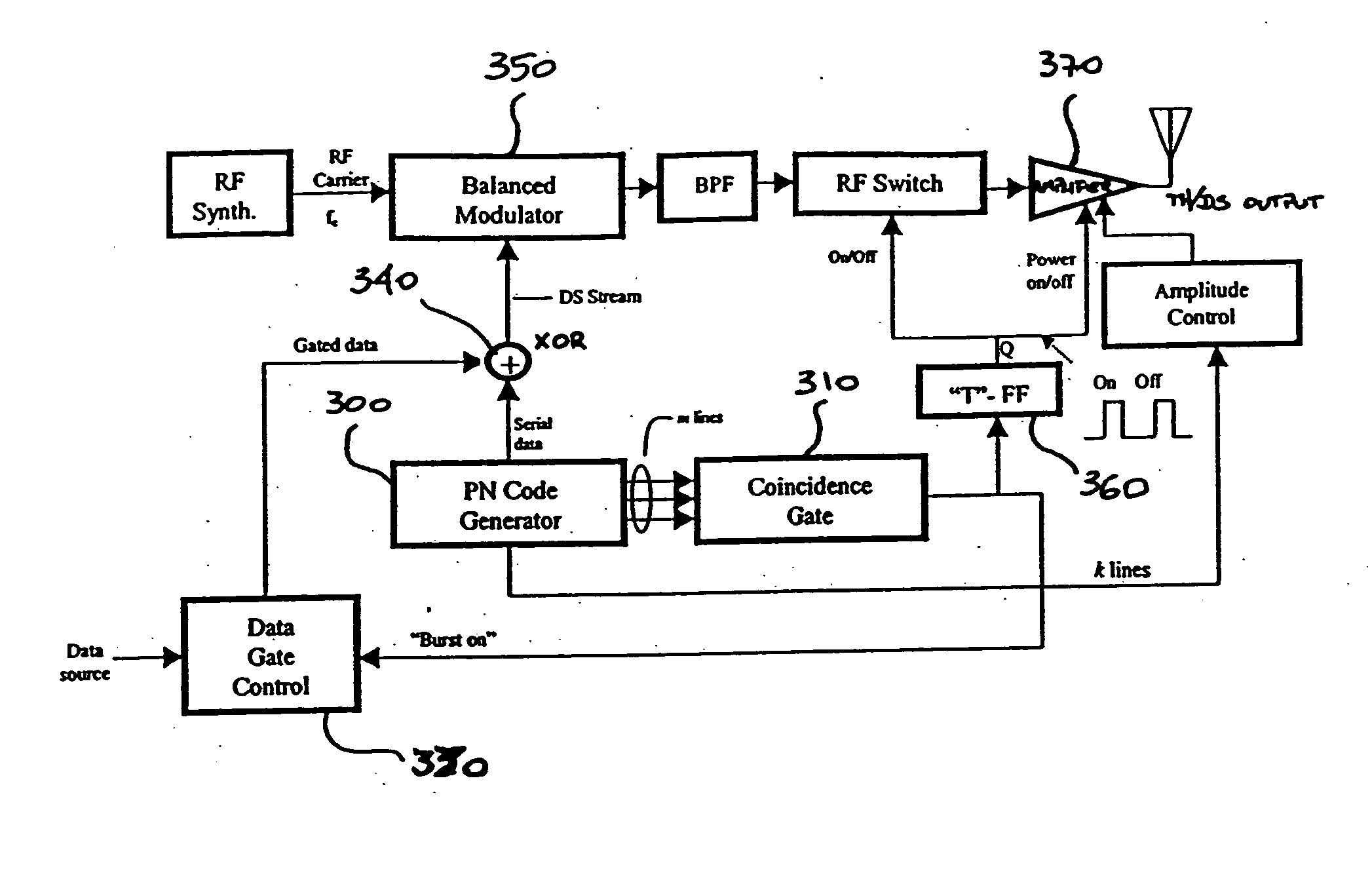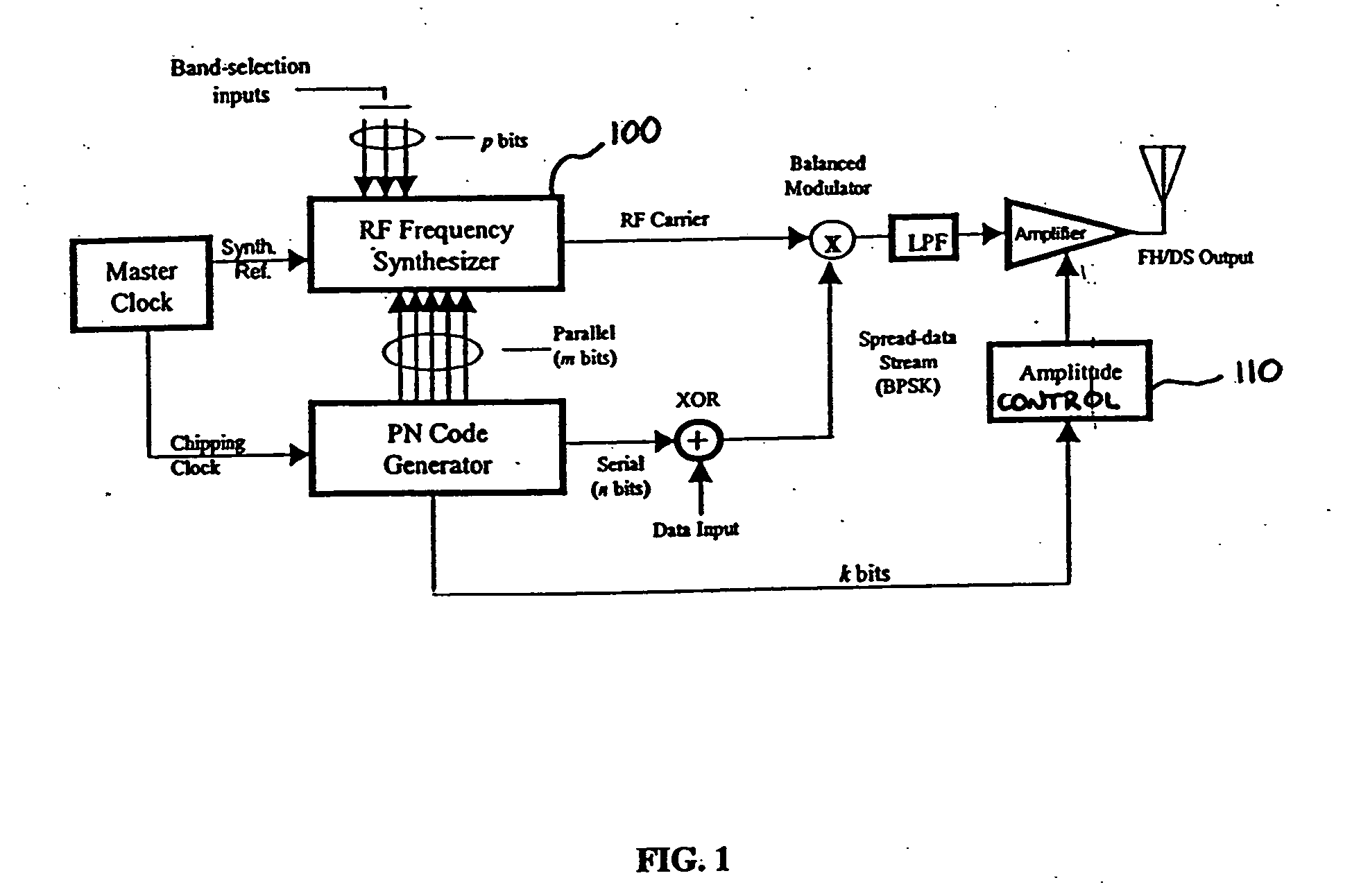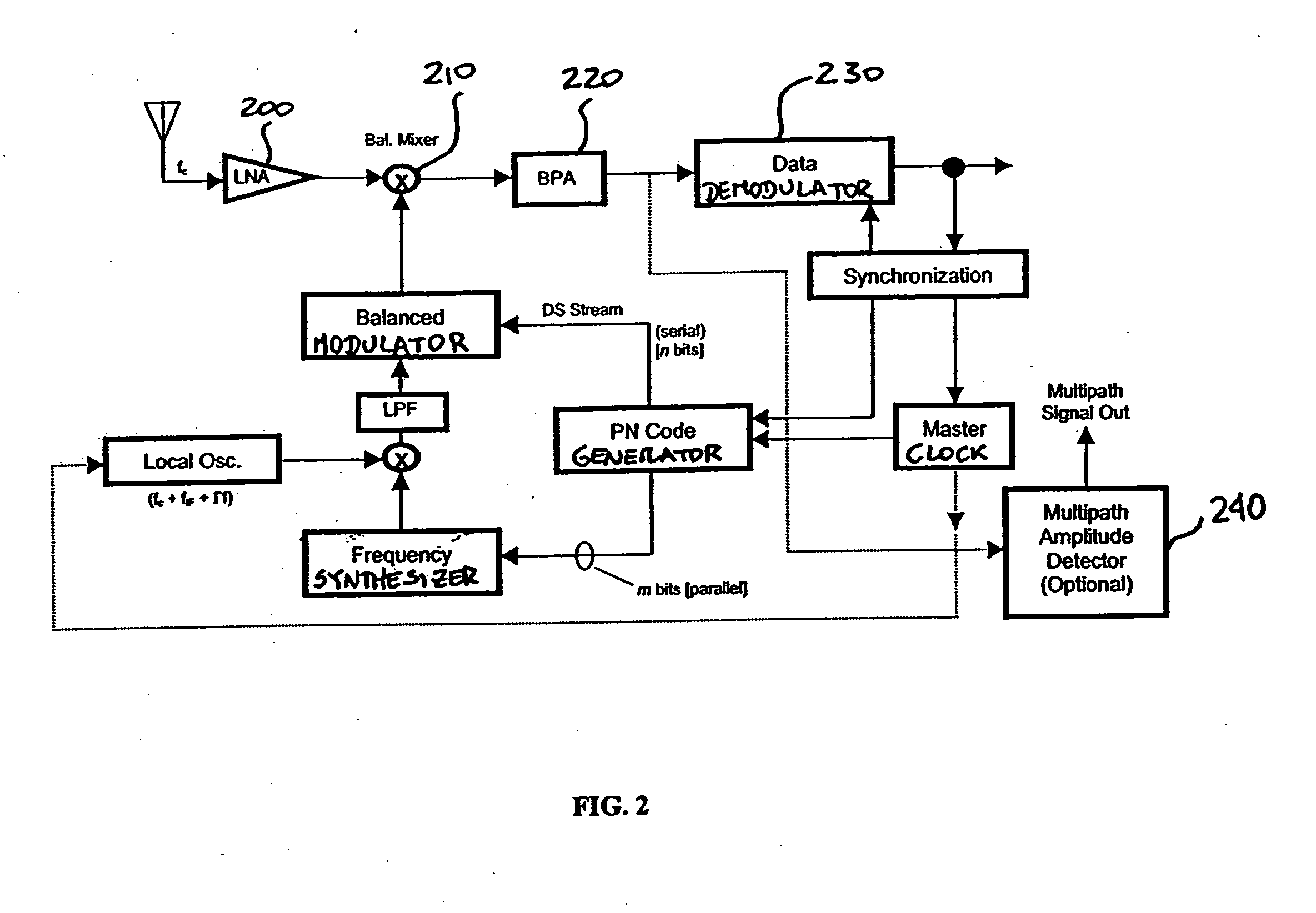Hybrid spread spectrum radio system
a radio system and spread spectrum technology, applied in the field of communications, can solve the problems of inability to reasonably obtain bandwidth, inability to meet the needs of users, etc., to achieve the effect of facilitating the need, facilitating the need, and facilitating the need
- Summary
- Abstract
- Description
- Claims
- Application Information
AI Technical Summary
Benefits of technology
Problems solved by technology
Method used
Image
Examples
example 1
[0052] Referring to FIGS. 1-2, a hybrid frequency-hopping / direct-sequence (FH / DS) spread-spectrum scheme is depicted.
[0053] A hybrid frequency-hopping / direct-sequence (FH / DS) spread-spectrum transmitter depicted in FIG. 1 is configured for standard BPSK data modulation. A subset of m bits from the full n-bit (n>m) PN code is used in synchronization with the chipping sequence to drive an RF synthesizer 100 to generate the exact RF carrier frequency desired for the hybrid SS transmission. Note that an additional p higher-order bits in the RF synthesizer (DDS) frequency-control word are used to specify the RF operating band; the lower-order m bits from the PN register select the individual hopping channels. The precise mapping of hopping frequencies in the RF synthesizer 100 can be handled straightforwardly via a ROM map or within an FPGA or equivalent device. The latter-implementations are particularly useful when implementing fast frequency hopping or for very high data throughput a...
example 2
[0057] Referring to FIGS. 3-4, a hybrid time-hopping / direct-sequence (TH / DS) spread-spectrum scheme is depicted.
[0058] A hybrid time-hopping / direct-sequence (TH / DS) spread-spectrum transmitter is represented by FIG. 3. Here, as in the previous TH / DS transmitting scheme, the main PN code generator 300 of n bits also provides a subset of m bits to a pattern-detecting coincidence gate 310. When the selected m-bit pattern is recognized, a data-gate control unit 330 gates a burst of data bits into the DS spreader (via an exclusive-OR gate 340 feeding a balanced modulator 350). Simultaneously, a trigger (“T”) flip-flop 360, in essence driven by the coincidence output line, gates on a final RF power amplifier 370 for the prescribed interval (plus small power-up and power-down times) to complete the time-hopped burst transmission.
[0059] The corresponding hybrid TH / DS spread-spectrum receiver architecture is shown in FIG. 4. Here, the TH / DS receiver is similar to the FH / DS receiver unit de...
example 3
[0060] Referring to FIGS. 5-6, a hybrid frequency-hopping / time-hopping / direct-sequence (FH / TH / DS) spread-spectrum scheme is depicted. The hybrid FH / TH / DS transmitter (FIG. 5) and receiver (FIG. 6) combine both FH / DS and TH / DS schemes to achieve more complex spreading distributions and afford even higher data security than the simpler types; the specific circuit details follow those in the previous diagrams.
[0061] These hybrid (FH / TH / DS) types of systems are probably the most useful for practical burst-mode wireless-sensor devices for difficult industrial RF environments. Alternatively, the bursts may be timed in a periodic rather than pseudorandom manner (thus, obviously, eliminating the true TH modulation component) when system update rates need to be highly regular, or when standard periodic time-slotting is desired.
[0062] Although these depicted transmitter implementations employ final RF carrier-frequency data-modulation methods, IF-modulation may alternatively be efficiently ...
PUM
 Login to View More
Login to View More Abstract
Description
Claims
Application Information
 Login to View More
Login to View More - R&D
- Intellectual Property
- Life Sciences
- Materials
- Tech Scout
- Unparalleled Data Quality
- Higher Quality Content
- 60% Fewer Hallucinations
Browse by: Latest US Patents, China's latest patents, Technical Efficacy Thesaurus, Application Domain, Technology Topic, Popular Technical Reports.
© 2025 PatSnap. All rights reserved.Legal|Privacy policy|Modern Slavery Act Transparency Statement|Sitemap|About US| Contact US: help@patsnap.com



